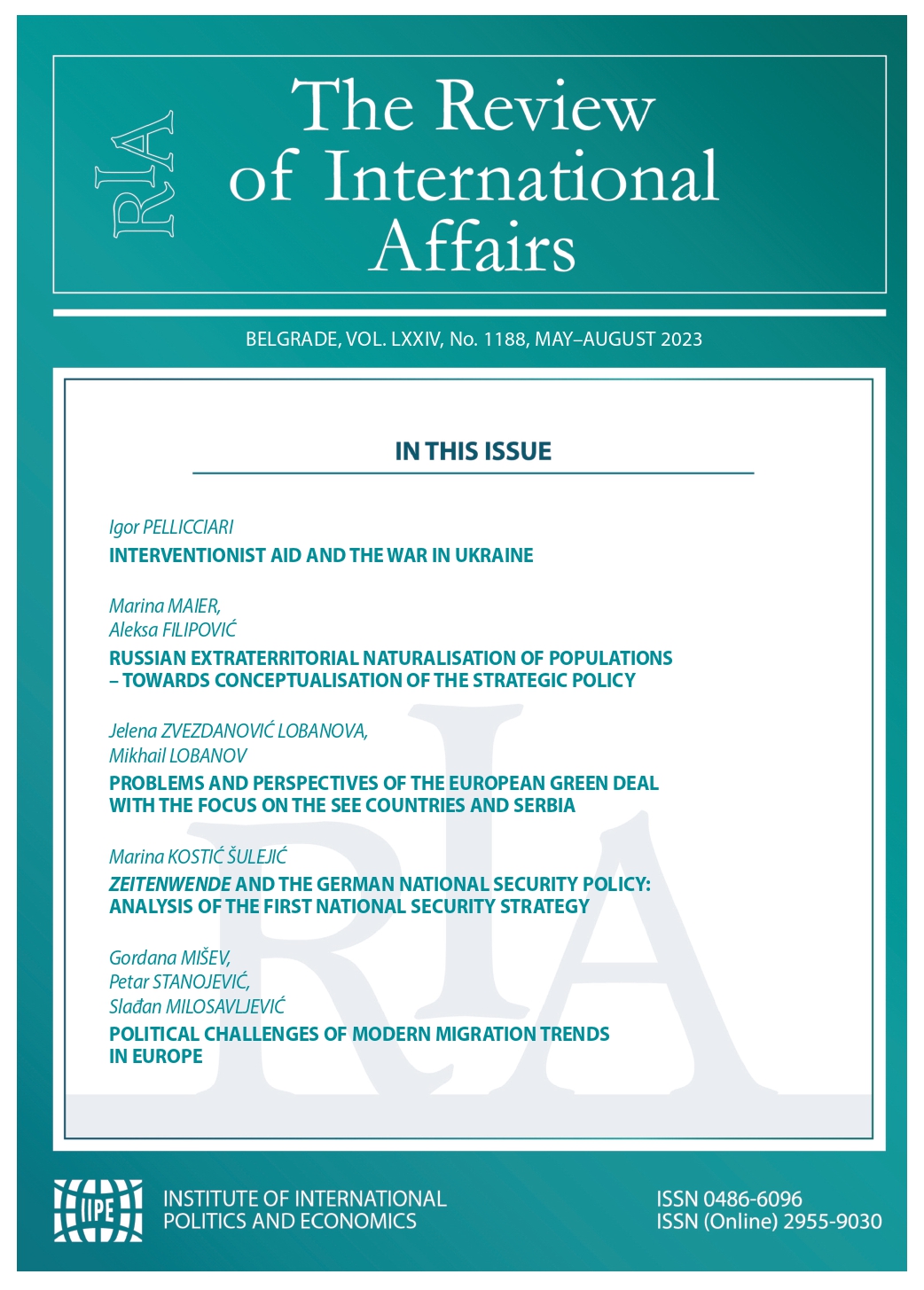Problems and Perspectives of the European Green Deal with the Focus on the SEE Countries and Serbia
Problems and Perspectives of the European Green Deal with the Focus on the SEE Countries and Serbia
Author(s): Jelena Zvezdanović Lobanova, Mikhail LobanovSubject(s): Politics / Political Sciences, Economy
Published by: Институт за међународну политику и привреду
Keywords: European Green Deal; green transition; climate neutrality; energy efficiency; energy intensity; greenhouse gas emissions; renewables; Southeastern Europe; Serbia.
Summary/Abstract: Global climate challenges increasingly determine the prospects for world economic development, which entails an increase in the importance of the green transition agenda in the activities of international organisations and national governments. An example of a developed and consistent action programme at the national and supranational levels is the European Green Deal (EGD). The EU member states adhere to an ambitious strategy to reduce greenhouse gas emissions and achieve climate neutrality, solving the problems of introducing eco-friendly technologies (including alternative energy), energy efficiency, the formation of a sustainable industry, and the transition to a circular economy. The EU member states and candidate countries from Southeastern Europe (SЕЕ) have to follow in the footsteps of the European climate policy and implement the developed plans to reduce the anthropogenic pressure on the environment. The key hypothesis of this study is that the states of the region, with rare exceptions, lag behind the average level of the EU in terms of the energy efficiency of their economies, the prevalence of energy-saving technologies, and the usage of renewables. Despite the developed institutional framework, the progress of the green transition in Serbia is very limited: the dynamics of reducing greenhouse gas emissions (including per GDP) is unsatisfactory, and the emissions intensity and energy intensity levels remain among the highest in the region. Using a comparative analysis method, we examined the structure of electricity generation and the place renewable sources take in this structure. We also analysed in detail the differences between the countries of the region in a number of indicators: energy intensity level of primary energy, greenhouse gas emissions (including per GDP), and the volume of carbon dioxide emissions in relation to the unit of electricity generated (emissions intensity). We conclude that institutional maturity, the sufficiency of financial support for the projects, and the availability of economic incentives for green transition are the determining factors for achieving the goals of the EGD in SEE.
Journal: The Review of International Affairs
- Issue Year: LXXIV/2023
- Issue No: 1188
- Page Range: 51-77
- Page Count: 27
- Language: English

